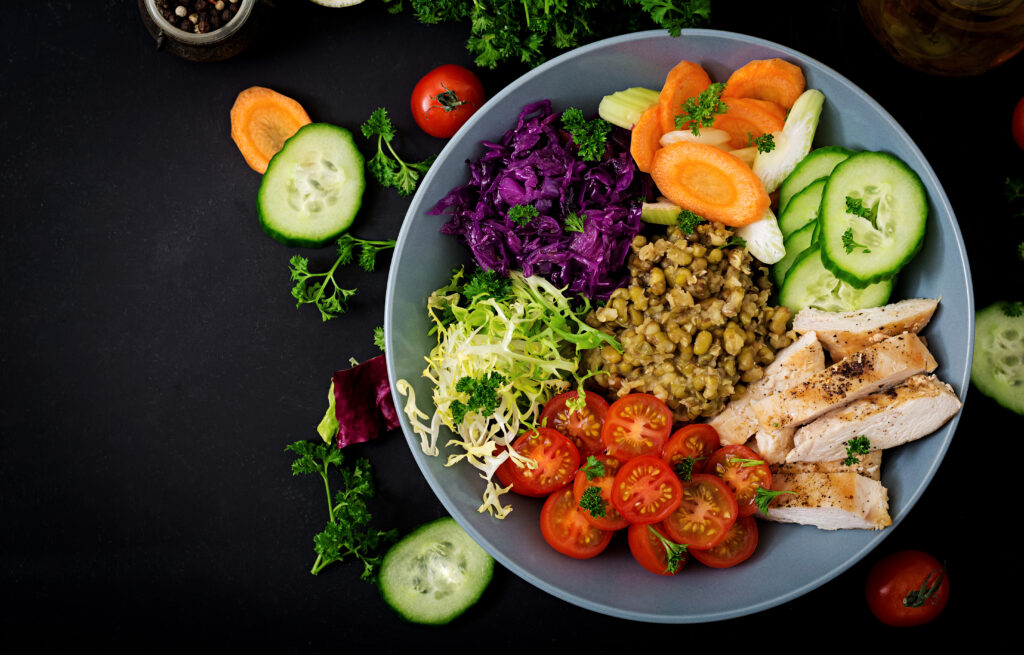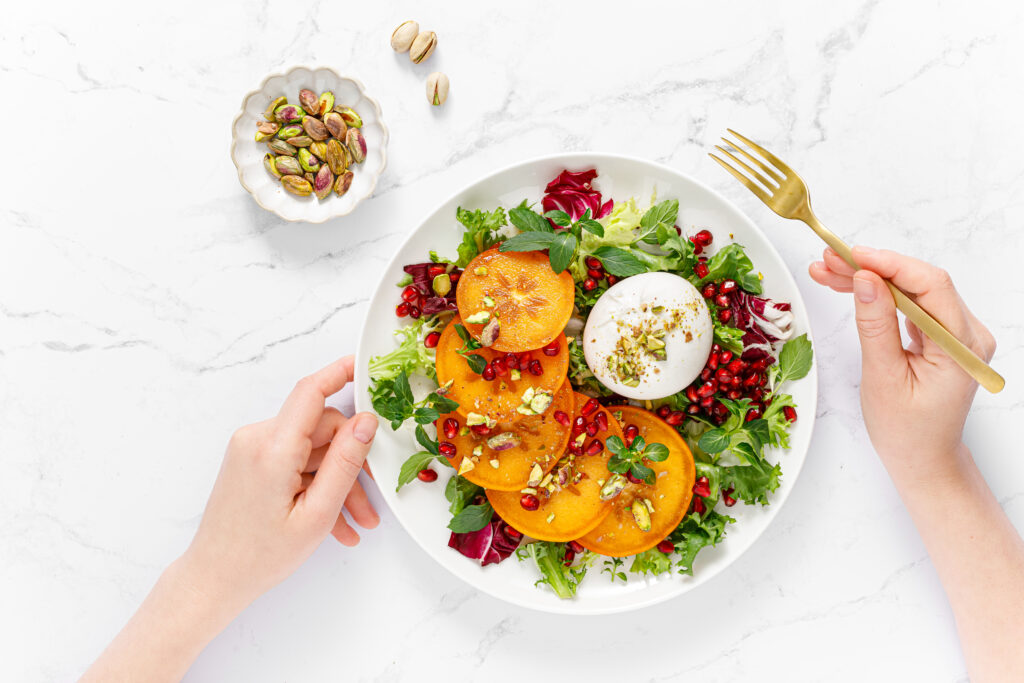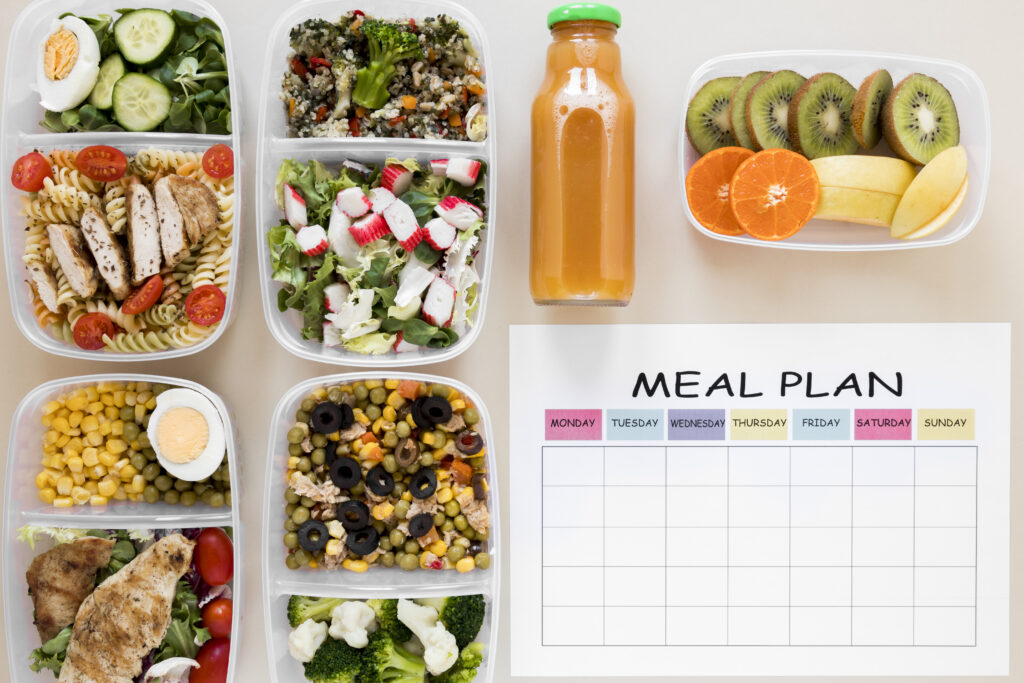For women over 50, eating right is key to staying healthy and feeling good. But can meal planning really meet the needs of aging while being tasty and satisfying? As we get older, our nutritional needs change. It’s important to adjust our eating habits for better health and happiness.
Think about it: eating 1,500 calories a day can help you lose about 1 pound a week. But this might not work for everyone. The right calorie range can vary based on your health goals and how active you are. Studies show that the Mediterranean diet is great for heart health, lowering inflammation, and keeping your mind sharp.
Food plays a big role in aging well. Eating foods full of nutrients, like fruits, greens, and healthy fats, can improve your life quality. But finding the right balance can be tricky. Learn how to plan meals that support aging gracefully with senior meal planning.
Understanding the Dietary Needs of Women Over 50
As women get older, their bodies change. This makes nutrition planning key for staying healthy after 50. A good senior diet helps with overall health and lowers the risk of diseases like high blood pressure, osteoporosis, and heart disease.
Creating healthy meals for women over 50 means knowing what they need every day. To keep muscles strong and support an active life, they should eat about 0.5–0.9 grams of protein per pound of body weight. For bones, women after menopause should get 1,200 mg of calcium daily. Potassium is also important, with 2,600 mg a day helping with blood pressure and cell health.
The diet should have enough omega-3 fatty acids, fiber, and vitamin B12. These are key for heart health, digestion, and the brain. Women over 50 need 1.1 grams of ALA (a type of Omega-3) and 25 grams of fiber daily. Also, 2.4 mcg of vitamin B12 a day is crucial since absorption drops with age. Eating a mix of fruits, veggies, whole grains, and lean proteins can help meet these needs.

Drinking enough water is important too, as older adults might not feel as thirsty. It’s good to drink water and low-sodium, low-sugar drinks often. Eating foods low in added sugars, saturated fats, and sodium is key to avoiding health problems.
Enjoying meals with others and following healthy aging tips can make eating fun and fulfilling. Planning meals with half the plate as veggies and fruits, a quarter as whole grains, and a quarter as protein-rich foods ensures a balanced diet.
In summary, following these dietary tips in regular nutrition planning helps women over 50 stay strong, independent, and happy as they age.
Creating a Balanced Diet for a Healthy Lifestyle
Senior meal planning is key to a healthy life for women over 50. It ensures good senior nutrition and keeps them active. A balanced diet means knowing and meeting the changing nutritional needs as we get older.
Women over 50 need 1,200 mg of calcium daily for strong bones. This is more than younger women need because older bones lose density. Foods like dairy, leafy greens, and fortified tofu are great for getting enough calcium.
Iron intake drops to 8 mg/day after menopause but is still crucial. It helps keep energy up and brain sharp. Foods like lentils, spinach, chicken, and turkey are good sources of iron. Adding foods high in Vitamin C helps your body absorb iron better.
Getting 320 to 400 mg of magnesium daily is important. It helps with over 300 body functions, like making proteins and helping muscles and nerves work right. Nuts, seeds, and whole grains are good magnesium foods.
Vitamin D is key for bone health and calcium use. Older adults often need supplements or vitamin D-rich foods since they get less sun. The daily goal is 600 IU.

When planning meals for seniors, think about their lifestyle. Active seniors might need more protein and carbs for energy. The USDA Food Patterns offer different models that can be adjusted for personal health needs. This helps with staying healthy and long-lived through diet.
Drinking enough water is also vital for a balanced diet. Women should aim for about 9 cups of fluids daily. This keeps kidneys working well and helps with nutrient use. Adding foods like cucumbers, zucchini, and watermelon to meals can help with hydration.
For more on how exercise fits into a healthy diet, check out this guide. It talks about cardio and strength training for women over 50. These activities are key for overall health.
Enhancing Senior Nutrition with Superfoods
Adding superfoods to nutrition planning is key for women over 50. These foods boost health and energy. They help prevent age-related problems and support wellness.
Foods like salmon and walnuts are full of omega-3 fatty acids. These are good for the heart and brain. They are vital for healthy meals for seniors.
Blueberries and dark chocolate have antioxidants. These fight inflammation and stress. They help seniors live longer and stay healthy.
Spinach and broccoli are packed with vitamins and minerals. They keep bones strong and boost the immune system. Legumes like lentils and chickpeas offer plant-based proteins and fibers. These help with feeling full and managing weight, important for wellness tips for older adults.

Greek yogurt and quinoa increase protein and calcium intake. These are key for keeping muscle mass and energy levels up. Avocados and chia seeds are good for brain health and joint function. They provide healthy fats.
Garlic, turmeric, and green tea are great for fighting inflammation and oxidation. They reduce the risk of heart disease and cognitive decline. Eating these superfoods regularly can greatly improve senior health. It supports a strong, active lifestyle through good nutrition.
To improve senior nutrition, choose foods wisely. Include a variety of superfoods for essential nutrients and flavor. This makes staying healthy both easy and fun.
Meal Planning Tips for Women Over 50: Crafting a Weekly Menu
Meal planning is key for women over 50 to keep a balanced diet and eat healthy. It starts with planning for the week ahead. For instance, planning meals can save about $500 a month. By spending one day a week on planning, shopping, and prep, you can stay under budget.
Having leftover nights can cut down on food waste and use recipes twice. This method saves ingredients, keeps meals fresh, and saves money. Getting family involved in meal prep adds a sense of community and brings in more recipe ideas. Grilled chicken and sheet pan vegetables are great for making ahead on Sunday, making lunches easier for the week.
Having a backup meal plan helps avoid unhealthy eating when unexpected things happen. The key to meal prep is to find easy, nutritious meals that you like. Tammera Karr and Kristi Von Ruden suggest 18 meal ideas to help seniors personalize their meals.
Eating a healthy breakfast, lunch, and dinner is important for wellness. Snacking on high-fiber foods like rye crisps with cheese or guacamole keeps nutrition steady. Drinking water throughout the day helps with health and nutrient absorption. If you feel tired or struggle in the kitchen, it’s time to ask for help with meal prep.
Meal planning is more than just eating. It’s about enjoying life’s flavors and meeting your dietary needs as you age.

